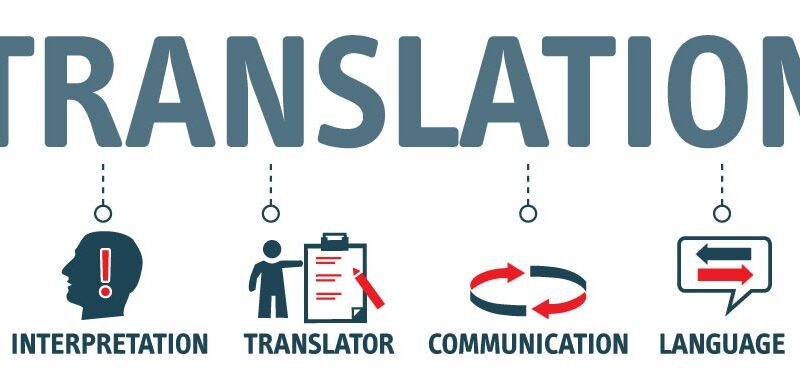
In an increasingly globalized market, the ability to communicate effectively across cultural and linguistic divides is paramount. For businesses aiming to expand their reach and scale operations, the Spanish-speaking market, with its over 500 million speakers worldwide, presents a lucrative opportunity. However, tapping into this diverse demographic requires more than just direct translation; it necessitates a deep understanding of regional nuances, cultural sensitivities, and language variants. This is where professional Spanish translation services come into play, acting as a bridge to not just communicate but connect with the Spanish-speaking world. In this article, we delve into the intricacies of Spanish translation, exploring the main language variants, the importance of localisation, and the types of content that can significantly benefit from professional translation services.
The Main Language Variants to Find the Right Spanish Translation Service
European Spanish
European Spanish, often referred to as Castilian, is the official language of Spain and serves as a reference point for Spanish language standards worldwide. It is characterized by its distinct pronunciation, vocabulary, and grammatical structures, which set it apart from other Spanish dialects. Businesses aiming to enter or expand within the Spanish market must understand these differences to effectively communicate with their target audience. A professional translation service adept in European Spanish can navigate these linguistic nuances, ensuring that your message resonates with the local audience.
LATAM Spanish
Latin American Spanish, or LATAM Spanish, encompasses a wide range of dialects spoken across the Americas. From the Rioplatense Spanish of Argentina and Uruguay to the Caribbean dialects of Cuba, the Dominican Republic, and Puerto Rico, LATAM Spanish is rich in diversity. Each region brings its own linguistic idiosyncrasies to the table, influencing vocabulary, pronunciation, and even grammar. For businesses looking to scale in Latin America, partnering with a translation service that specializes in the specific regional dialects of your target markets is crucial. This level of specialization ensures that your content is not only accurately translated but culturally relevant and engaging.
US Spanish
US Spanish is a unique blend, reflecting the influences of various Spanish-speaking immigrant communities within the United States. It incorporates elements from Mexican Spanish, Cuban Spanish, Puerto Rican Spanish, and others, creating a distinct dialect that resonates with the Hispanic population in the US. Companies targeting the Hispanic market in the United States need to consider this linguistic diversity and adopt a tailored approach to translation. A professional translation service with expertise in US Spanish can help businesses navigate these complexities, making their content accessible and appealing to a wide range of Spanish-speaking audiences in the US.
Main Differences With English (And Why You Need a Professional Partner)
Spanish and English, while both widely spoken and influential on the global stage, have fundamental differences that can pose challenges in translation. These differences go beyond mere vocabulary and extend into grammar, syntax, and cultural context. For instance, Spanish has a richer set of verb conjugations and places a greater emphasis on gendered nouns and adjectives, which can significantly alter the tone and meaning of a translation. Furthermore, idiomatic expressions and cultural references that make sense in English may not have a direct or meaningful counterpart in Spanish.
This linguistic and cultural gap underscores the importance of partnering with a professional Spanish translation service. Such a partner brings not only a deep understanding of both languages but also a cultural sensitivity that is essential for accurate and effective communication. They can navigate the subtleties of the language, ensuring that your business message is conveyed clearly, respectfully, and engagingly to your target audience.
Why Localise? Top Reasons to Stay Ahead of the Curve
Localization goes a step beyond translation, adapting content to suit the cultural and linguistic context of the target audience. It involves a comprehensive understanding of local customs, values, and consumer behavior, ensuring that your message is not just understood but also resonates with the audience. Here are three key reasons why localization is critical for businesses aiming to scale globally:
- Enhanced Customer Experience: Localization ensures that your content speaks directly to the audience in their language, considering their cultural norms and preferences. This personalized approach fosters a stronger connection with the brand, enhancing customer satisfaction and loyalty.
- Competitive Advantage: In a crowded market, localization can be a differentiator, setting your brand apart from competitors who may not have invested in tailoring their content for the local audience. It shows a commitment to the market and an understanding of the customer’s needs and preferences.
- Increased Market Penetration: By adapting your content for local markets, you can more effectively reach and engage potential customers. Localization helps overcome language and cultural barriers, making your products or services more accessible to a wider audience.
Understanding How Localisation Works
Localization is a multifaceted process that goes beyond the surface level of translation. It involves several key steps:
- Cultural Adaptation: This step examines the cultural context of the target market, identifying potential sensitivities and adapting content to align with local values and norms. It may involve changing images, colors, or references to ensure they are culturally appropriate.
- Linguistic Localization: Beyond translating text, linguistic localization addresses local dialects, idioms, and jargon, ensuring the language used is familiar and relatable to the audience.
- Technical Adjustments: Localization also requires technical adaptations, such as converting currencies, adjusting date formats, and ensuring that the content is compatible with local technologies and platforms.
Professional translation service that specialize in localization understand these complexities and can expertly guide businesses through the process, ensuring that their content is perfectly tailored for their target Spanish-speaking markets.
Types of Content for Which Spanish Translation Services Are Highly Useful
Website Localization
In today’s digital age, a website is often the first point of contact between a business and its potential customers. Localizing your website into Spanish can significantly broaden your reach, making your products or services accessible to millions of Spanish-speaking users. It involves not just translating the text but also adapting the design, layout, and functionality to meet the expectations of the target audience. A well-localized website can improve user experience, increase engagement, and ultimately drive conversions.
Social Media and Blog Translation Services
Social media and blogs are powerful tools for engaging with customers and building brand awareness. By localizing your social media content and blog posts into Spanish, you can tap into a vast and active online community, fostering a deeper connection with Spanish-speaking audiences. Professional translation services can help maintain the tone, humor, and cultural relevance of your original content, ensuring that it resonates with the target audience.
Document Translation
For businesses operating across borders, the need for accurate document translation is paramount. This includes legal documents, contracts, manuals, reports, and marketing materials, among others. Professional Spanish translation services ensure that these documents are accurately translated, considering the legal and cultural nuances of the target market. This is essential for smooth operations, compliance, and building trust with customers and partners.
In conclusion, scaling your business with Spanish translation services requires a thoughtful and nuanced approach. By understanding the main language variants, the importance of localization, and the types of content that benefit most from professional translation, businesses can effectively communicate and connect with Spanish-speaking audiences around the world.
Also Read :- https://emperiortech.com/benefits-of-best-quality-spc-flooring-in-dubai/











